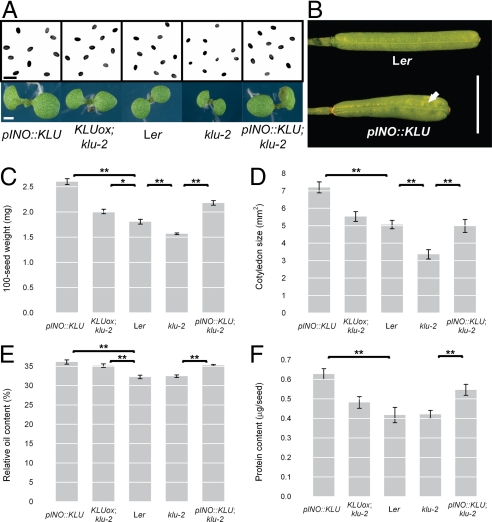Fig. 2.
Effects of altered KLU activity in developing ovules. (A) Light micrographs of mature seeds (Upper) and 7-day old seedlings (Lower) of the genotypes indicated below. (B) Expression of KLU in ovules from the pINO::KLU construct (Bottom) leads to the formation of wider siliques with uneven growth of the silique walls (solid arrow) compared with the slender siliques of WT with their smooth surface (Top). (C–F) Quantification of seed and embryo characteristics in response to altered KLU activity. Ten plants per genotype were grown to maturity without any assisted pollination and harvested for measurements. The KLUox; klu-2 line has higher expression of KLU than WT in the endogenous pattern [same as klu-2 RLox2 in the article by Anastasiou et al. (19)], and is therefore most appropriately compared with Ler WT plants. Concerning KLU activity in ovules, the initial 4 genotypes represent a series of decreasing activity levels, whereas the fifth genotype represents an ovule-specific rescue of KLU function in an otherwise mutant background, and is therefore compared with nontransgenic klu-2 mutants. (C) Weight of 100 seeds. (D) Cotyledon area of 7-day-old seedlings. (E) Relative oil content of seeds as determined by NMR spectroscopy. (F) Absolute protein content per seed. Values shown are mean ± SEM. *Significantly different from control at P < 0.05, **significantly different from control at P < 0.01; both after Bonferroni correction. (Scale bars: A, 1 mm; B, 5 mm.)

